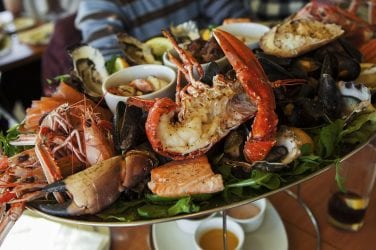Bausano extrusion lines are some of the bests in the business for processing plastics. If you’re looking to buy an extrusion line, be sure to consider the features below:
- They offer high quality and reliability.
- Their machines are easy to operate and maintain.
- They have a wide range of products that can meet your needs.
If you’re in the market for an extrusion line to process plastics, it’s important to understand what the different types of extrusion lines are and what they can do. Below is a guide to help you out.
Single Screw Extruders
A single screw extruder uses one rotating screw inside a barrel to convey and mix the plastic resin pellets with any additives before forcing them through a die at the end of the barrel. This type of machine tends to be less expensive than other options, but generally has lower output rates and shorter product life spans. They’re also not as versatile when it comes to processing various types of resins.
Twin Screw Extruders
Twin screw extruders use two screws-one stationary and one rotating-to move and mix the plastic resin more thoroughly than a single screw extruder does. Additionally, this type of machine can handle multiple polymer types simultaneously which makes them better suited for high-volume production runs. However, twin screw extruders are typically more expensive than single screw machines.
Get to know about extrusion processing
Extrusion is a process used to create objects from thermoplastic materials. In this process, molten plastic is forced through a die to create the desired shape. Extrusion lines are machines that use heat and pressure to produce films, pipes, rods, and other shapes from plastics.
It is a manufacturing process that uses a machine to produce pipes, tubing, cable sheathing, and other profiles from plastic raw materials. The term “extrusion” comes from the fact that the material is forced through an opening (the die) to create the desired shape.
The most common type of extrusion line for producing pipes is a single-screw Extruder. This system consists of three main parts:
- The Feed Section – where the polymer pellets are heated and melted before injection into the barrel
- The Barrel – where heating and mixing take place, as well as gradual deformation of the profile along its length under pressure; and
- The Die –determines both profile shape and size exiting the barrel.
Role of auxiliary equipment in extrusion processing
Auxiliary equipment is important in extrusion processing to help improve the quality and efficiency of the process. One of the most important pieces of auxiliary equipment is the chiller. This unit keeps the material cool as it moves through the extruder, which helps to prevent degradation and allows for better control over the process.
Additionally, conveying systems are used to move materials through the machine quickly and efficiently. They can also be used to sort and separate different types of plastics before processing. Finally, pelletizers create small pellets out of plastic so that they can be easily transported and stored. These pellets are often used in conjunction with downstream auxiliaries like grinders and sorters.
Upstream Auxiliary Equipment for Extrusion Processing
Upstream auxiliary equipment is critical for ensuring the quality and efficiency of extrusion processing. Extrusion equipment is an important part of the plastics manufacturing process. By understanding its key components and functions, you can better appreciate how this machinery helps to produce a variety of plastic products.
Downstream Auxiliary Equipment for Extrusion Processing
Downstream auxiliary equipment is critical for ensuring the quality and efficiency of extrusion processing. Auxiliary equipment can include grinders, sorters, and other machines that help to prepare raw materials or product output for further manufacturing or finishing steps.
Grinders are used to break down large chunks of material into smaller pieces that will be more easily processed by the downstream machinery. Sorters are used to separate defective parts from good components, as well as different colors or grades of plastic pellets. Other types of downstream auxiliaries might include drying systems, conveying systems, and labeling machines.
The use of appropriate auxiliary equipment can help ensure consistent quality in the finished product while also boosting production speed and efficiency. By understanding the functions of these key pieces of machinery, you can better appreciate how they play a role in making plastic products such as bottles, bags, medical devices, and more.
Different Types of Plastic Pipes Processing
Various types of plastic material can be used in the manufacture of pipes through extrusion processes. These include soft PVC, rigid PVC, transparent materials, supercharged PVCs, and combinations of acrylic resins with different plastics. Additionally, CPVC (chlorinated polyvinyl chloride), PO (polyolefin) or Polyethylene (PE), PP (Polypropylene), and HDPE can also be processed through these lines to create WPCs which are based on either PVC or Polyolefin materials.
Conclusion
Overall, Extrusion Lines for Plastics Processing is a piece of excellent machinery for processing a variety of plastic materials. This equipment can handle multiple types of PVC and other similar materials.






